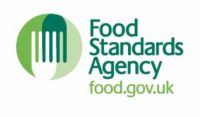The latest round of industry and European Union (EU) testing published today found no horse meat DNA in meat products at or above the 1% reporting threshold, according to the UK's Food Standards Agency.
Since 2013, the FSA has been working with the European Commission and industry on an extensive program of testing to detect horse meat in other meat products. These tests were carried out to check that beef products on sale or supplied into the UK food supply were accurately labeled and did not contain horse meat or horse DNA, following the discovery of horse meat in a range of products for sale across Europe.
Fourth quarterly report
The FSA has published its fourth quarterly report of industry results from the testing of meat products for horse meat or horse DNA. The report includes 3,395 new results for beef products, and 2,466 results for other (non-beef) meat products. These figures include all test results submitted since the compilation of the third report, published in January 2014.
The food industry has continued to test meat products for the presence of horse meat/DNA since the previous quarterly update. A total of 50,876 results for horse meat/DNA in meat products have been submitted by industry to the FSA since Feb. 15, 2013. Of these, 47 samples were positive for horse meat or horse DNA. However, no new positive results have been reported since the first quarterly report in June 2013.
Results of second round of EU-wide testing
In addition to the industry testing, the UK also participated in a second round of EU-wide testing for undeclared horse meat in processed beef products. The latest round of 150 samples were taken by 24 local authorities and found no traces of horse meat. The majority of samples were taken in the first two weeks of the sampling period, which ran from April 21 to June 16, 2014.
A range of processed beef products were tested for undeclared horse meat as part of this EU-wide survey requested by the European Commission. These included ready meals containing beef, canned beef products, beef sausages, beef burgers, minced beef and beef meatballs.
Sampling and analysis
Local authorities were asked to take samples from retail outlets including major and medium sized supermarkets and smaller shops and butchers. They were also asked to sample from wholesale "cash and carry" premises and manufacturers supplying retailers or mass caterers. This included businesses supplying public institutions such as schools, prisons and hospitals.
A small number of composition/labeling issues were detected in relation to the presence of other meats (not horse). Local authority enforcement officers are taking action to address non-compliance in all these cases.




